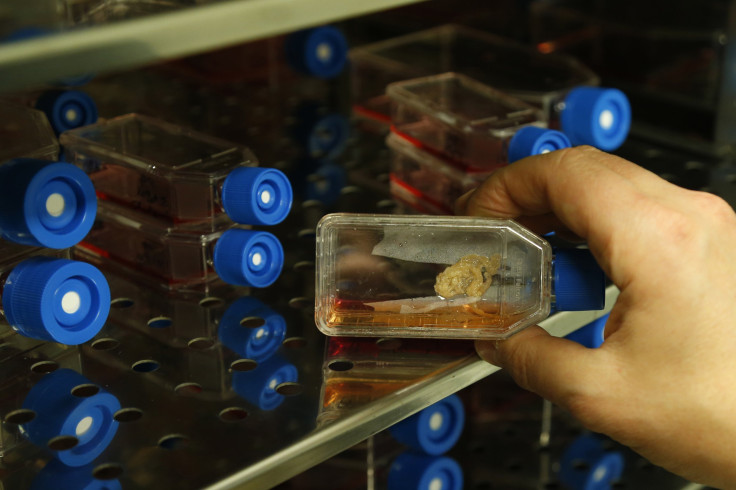Stem cell transplants to be used in treating Crohn’s disease

A new trial to assess the benefits and safety of stem cell transplantation for treatment-resistant Crohn’s disease has started. The researchers will use stem cells to “reboot” the immune system so that it is more responsive to existing drugs used to treat the disease.
Crohn’s disease is a long-term condition that results in inflammation of the lining of the digestive system. It affects as many as two people per 1,000 and is becoming more common.
People who have Crohn’s disease can suffer from diarrhoea, abdominal pain, extreme tiredness and weight loss. Untreated, the disease has a significant impact on quality of life. Although Crohn’s disease can occur at any age, it usually manifests itself in adolescence.
The exact cause is not clear, but we known that genes and the environment play an important role. The inflammation in Crohn’s disease is caused by “allergic reactions” in the immune cells that line the gut to the normal bacteria that exist in all of our intestines.
Current treatments, including steroids, aim to suppress this immune reaction. In the last decade, there have been great advances in treatments including targeted biological therapies that can heal the gut. However, these treatments don’t work for all patients, and some who initially respond well may loose their response over time.
Most treatments have side effects, including a risk of infection. Ongoing active disease can eventually cause blockage in the gut or abscesses that may need surgery to remove the affected section.
Although surgery may be the best option for some people, the disease nearly always recurs at a later date. Having many operations leaves people at risk of malnutrition and may require the formation of a stoma. This is when a surgeon brings a loop of bowel out through an opening created on the abdominal wall so that so that faeces empties into an attached bag.
Eight sites
The new trial, that has been launched at eight sites across the UK, involves the use of stem cells to treat Crohn’s disease. Stem cells are the multipurpose parent cells that live in our bone marrow and grow into the normal immune system. Stem cell transplantation aims to remove a patient’s current immune cells and replace them with fresh cells grown from their own stem cells. The purpose of this is to reset the immune system so that it no longer reacts to the gut bacteria.
Recent research has shown stem cell transplantation to be very effective in treating other autoimmune disease, such as multiple sclerosis.
Our trial, called ASTIClite, will investigate whether transplantation can reduce gut inflammation and offer hope to people with Crohn’s disease for whom all other treatments have been unsuccessful.
ASTIClite is a follow up to our previous ASTIC trial in 2015, which investigated a similar stem cell therapy. Although the therapy in the original trial did not cure the disease, we found that many patients benefited from the treatment. However, there were some serious side effects from the doses of strong drugs that were used to destroy their faulty immune system. This follow up trial is using a much lower dose of these drugs to minimise the risk of side effects.
In the ASTIClite trial, patients will be randomly allocated to receive either the stem cell transplant or current standard care, which can include any currently available treatment for Crohn’s disease.
The transplant process involves patients receiving immune suppressing drugs and growth factor injections that stimulate the stem cells to multiply in the bone marrow and spill out into the blood so that they can be harvested and frozen for later use. Strong drug therapy is then used to wipe out their faulty immune system.
When the stem cells are reintroduced to the body, they develop a fresh immune system. It is also thought that the new immune system may respond to drugs that have previously lost their benefit. This means that even if the stem cell transplant doesn’t “cure” a patient’s Crohn’s disease, it may allow them to respond to a drug treatment that had previously not worked.
All patients will come to clinics for around a year after their stem cell transplant, or equivalent for the standard of care group, and will complete questionnaires on their symptoms and quality of life. Patients will also have blood tests, MRI scans and colonoscopies at various points during this period.
Importantly, we will carefully assess the safety of this new treatment. Patients are then invited to attend an annual follow up visit for a further four to seven years so that we can look at their symptoms and quality of life over a longer period of time, and compare the course of the disease after a stem cell transplant with that of the standard of care group. We expect to publish results in late 2022.
If the stem cell transplant is shown to improve the symptoms and quality of life for patients with Crohn’s disease, this will be an important advance in treating the disease in patients who haven’t responded to standard treatments.
James Lindsay, Professor of Inflammatory Bowel Disease, Queen Mary University of London
This article was originally published on The Conversation. Read the original article.





















